
Audrain County is a county located in the central part of the U.S. state of Missouri. As of the 2020 census, the population was 24,962. Its county seat is Mexico. The county was organized December 13, 1836, and named for Colonel James Hunter Audrain of the War of 1812 and who later was elected to the state legislature.

911, sometimes written 9-1-1, is an emergency telephone number for Argentina, Canada, Dominican Republic, Jordan, Mexico, Palau, Panama, the Philippines, Sint Maarten, the United States, and Uruguay, as well as the North American Numbering Plan (NANP), one of eight N11 codes. Like other emergency numbers around the world, this number is only intended for use in emergency circumstances. Using it for any other purpose is a crime in most jurisdictions. Penalties for abuse or misuse of 911 can range from probation or community service to fines and jail time. Offenders can also be ordered to undergo counseling and have their use of telephones restricted or suspended for a period time as a condition of probation.
Enhanced 911 is a system used in North America to automatically provide the caller's location to 911 dispatchers. 911 is the universal emergency telephone number in the region. In the European Union, a similar system exists known as E112 and known as eCall when called by a vehicle.

A conductor or guard is a train crew member responsible for operational and safety duties that do not involve actual operation of the train/locomotive. The conductor title is most common in North American railway operations, but the role is common worldwide under various job titles. In Commonwealth English, a conductor is also known as guard or train manager.

Computer-aided dispatch (CAD), also called computer-assisted dispatch, is a method of dispatching taxicabs, couriers, field service technicians, mass transit vehicles or emergency services assisted by computer. It can either be used to send messages to the dispatchee via a mobile data terminal (MDT) and/or used to store and retrieve data. A dispatcher may announce the call details to field units over a two-way radio. Some systems communicate using a two-way radio system's selective calling features. CAD systems may send text messages with call-for-service details to alphanumeric pagers or wireless telephony text services like SMS. The central idea is that persons in a dispatch center are able to easily view and understand the status of all units being dispatched. CAD provides displays and tools so that the dispatcher has an opportunity to handle calls-for-service as efficiently as possible.
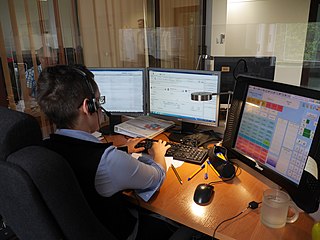
A public-safety answering point (PSAP), sometimes called a public-safety access point, is a type of call center where the public's telephone calls for first responders are received and handled. It takes calls from any landline, mobile phone line, or VoIP line. It can also happen that when 112 is dialed in then a logic is implemented by mobile or network operators to route the call to the nearest police station. Such call centers exist in most countries to answer calls to an emergency telephone number. Trained telephone operators are also usually responsible for dispatching these emergency services. Most PSAPs are now capable of caller location for landline calls, and many can handle mobile phone locations as well, where the mobile phone company has a handset to location system. Some can also use voice broadcasting where outgoing voice mail can be sent to many phone numbers at once, in order to alert people to a local emergency such as a chemical spill.
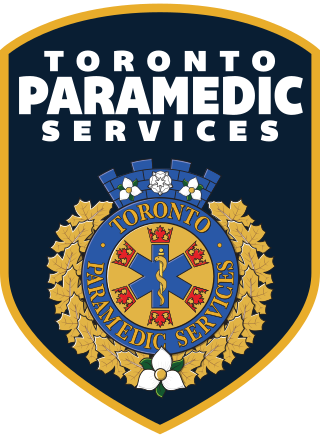
The City of Toronto Paramedic Services, is the statutory emergency medical services provider in Toronto, Ontario, Canada. The service is operated as a division of the City of Toronto, under the Community & Social Services cluster. The service is funded by the municipal tax base, and operates similarly to other municipal divisions, such as the Toronto Parks, Forestry & Recreation division, or the Toronto Water division, but retains operational independence from other divisions. While under municipal government control, it is subject to provincial legislation and licensing. It is not the only service provider in its area; private-for-profit medical transport services also provide routine, non-emergency transports and coverage for special events, but the statutory emergency medical system is the only provider permitted to service emergency calls.
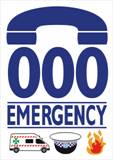
000 Emergency, also known as Triple Zero or Triple 0, and sometimes stylised Triple Zero (000), is the primary national emergency telephone number in Australia and Australian External Territories. The Emergency Call Service is operated by Telstra, and overseen by the Australian Communications and Media Authority (ACMA), and is intended only for use in life-threatening or time-critical emergencies.

Signed into effect on 12 June 2002, the Public Health Security and Bioterrorism Preparedness and Response Act of 2002 (PHSBPRA) was signed by the President, the Department of Health and Human Services (DHHS) and the U.S. Department of Agriculture (USDA).

Louisville Metro Emergency Medical Services is the primary provider of pre-hospital life support and emergency care within Louisville-Jefferson County, Kentucky. LMEMS is a governmental department that averages 90,000 calls for service, both emergency and non-emergency, each year.
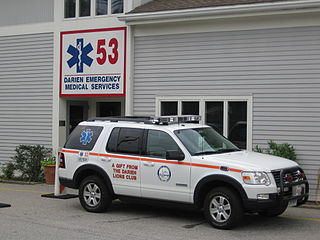
In the United States, emergency medical services (EMS) provide out-of-hospital acute medical care and/or transport to definitive care for those in need. They are regulated at the most basic level by the National Highway Traffic Safety Administration, which sets the minimum standards that all states' EMS providers must meet, and regulated more strictly by individual state governments, which often require higher standards from the services they oversee.
Winnipeg Fire Paramedic Service (WFPS) provides fire and EMS services to the City of Winnipeg, Manitoba. It operates from 27 fire stations, and 3 administration offices across the city.
Emergency Medical Service in Germany is a service of public pre-hospital emergency healthcare, including ambulance service, provided by individual German cities and counties. It is primarily financed by the German public health insurance system.
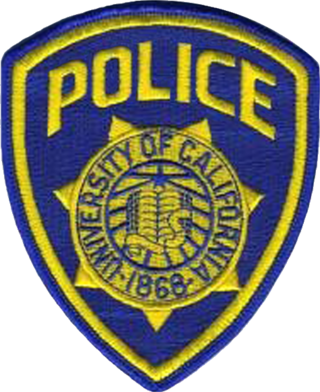
Police departments in the University of California system are charged with providing law enforcement to each of the system's campuses.

The Medical Priority Dispatch System (MPDS), sometimes referred to as the Advanced Medical Priority Dispatch System (AMPDS) is a unified system used to dispatch appropriate aid to medical emergencies including systematized caller interrogation and pre-arrival instructions. Priority Dispatch Corporation is licensed to design and publish MPDS and its various products, with research supported by the International Academy of Emergency Medical Dispatch (IAEMD). Priority Dispatch Corporation, in conjunction with the International Academies of Emergency Dispatch, have also produced similar systems for Police and Fire
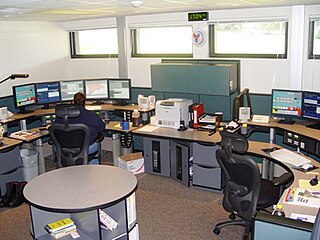
An emergency medical dispatcher is a professional telecommunicator, tasked with the gathering of information related to medical emergencies, the provision of assistance and instructions by voice, prior to the arrival of emergency medical services (EMS), and the dispatching and support of EMS resources responding to an emergency call. The term "emergency medical dispatcher" is also a certification level and a professional designation, certified through the Association of Public-Safety Communications Officials-International (APCO) and the International Academies of Emergency Dispatch. Many dispatchers, whether certified or not, will dispatch using a standard emergency medical dispatch protocol.
The Dutchess County Department Of Emergency Response has the responsibility of governing Emergency operations in Dutchess County, New York. This encompasses Police, Fire and EMS.

A mass casualty incident describes an incident in which emergency medical services resources, such as personnel and equipment, are overwhelmed by the number and severity of casualties. For example, an incident where a two-person crew is responding to a motor vehicle collision with three severely injured people could be considered a mass casualty incident. The general public more commonly recognizes events such as building collapses, train and bus collisions, plane crashes, earthquakes and other large-scale emergencies as mass casualty incidents. Events such as the Oklahoma City bombing in 1995, the September 11 attacks in 2001, and the Boston Marathon bombing in 2013 are well-publicized examples of mass casualty incidents. The most common types of MCIs are generally caused by terrorism, mass-transportation accidents, fires or natural disasters. A multiple casualty incident is one in which there are multiple casualties. The key difference from a mass casualty incident is that in a multiple casualty incident the resources available are sufficient to manage the needs of the victims. The issue of resource availability is therefore critical to the understanding of these concepts. One crosses over from a multiple to a mass casualty incident when resources are exceeded and the systems are overwhelmed.

Emergency Medical Service in Austria is a service of public pre-hospital emergency healthcare, including ambulance service, provided by individual Austrian municipalities, cities and counties. It is primarily financed by the Austrian health insurance companies.
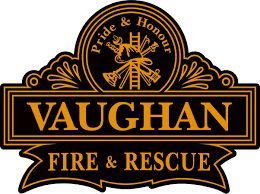
Vaughan Fire and Rescue Services (VFRS) provides fire protection, technical rescue services, hazardous materials response, and first responder emergency medical assistance to the city of Vaughan, Ontario. It operates 10 fire stations and coordinates with other fire departments in York Region and the Greater Toronto Area. VFRS received a 100 per cent satisfaction rating in the City of Vaughan’s 2018 Citizen Survey.


















